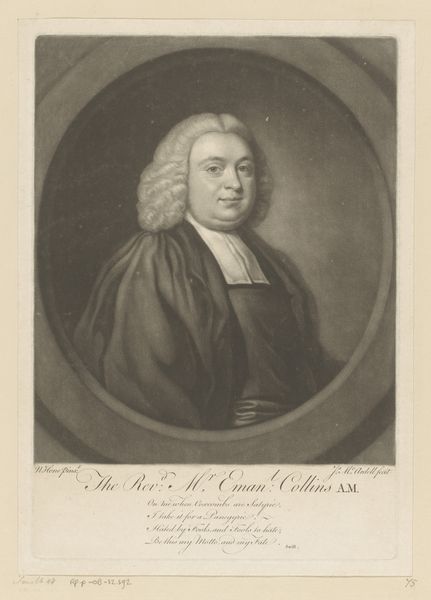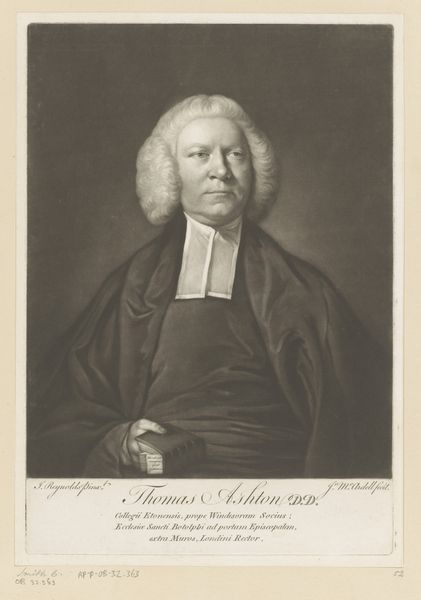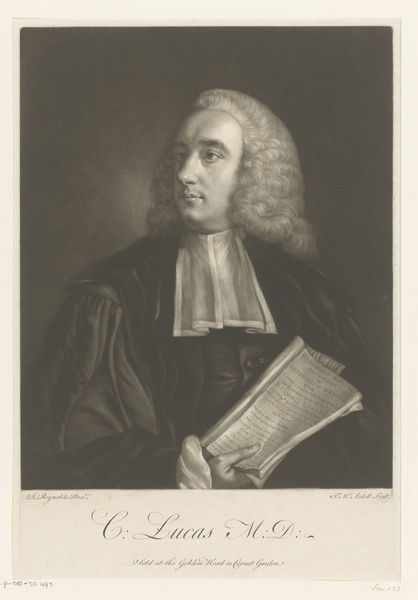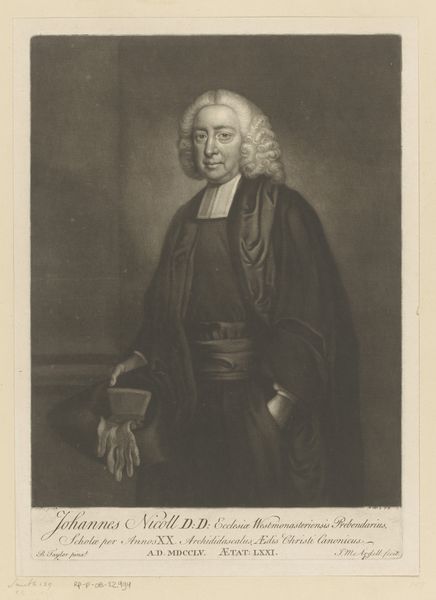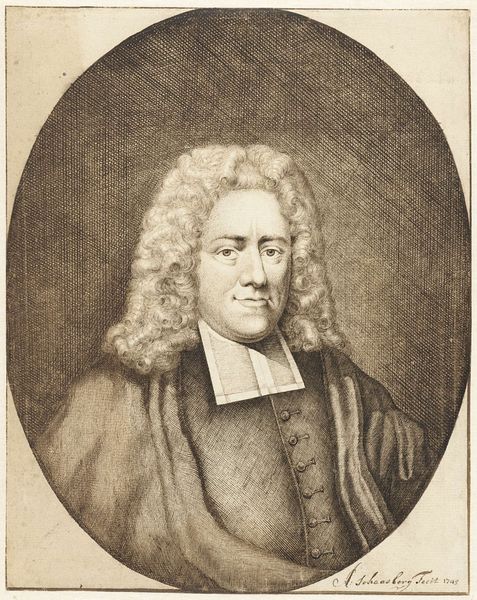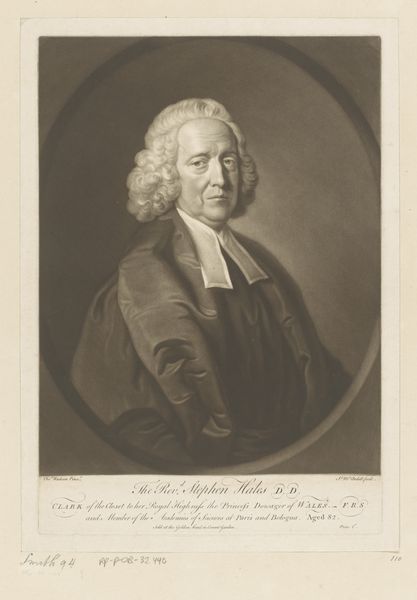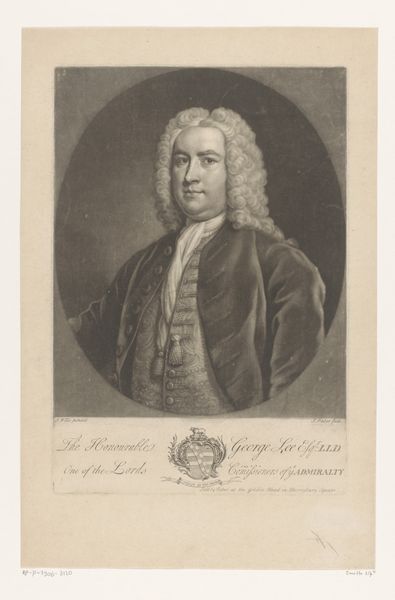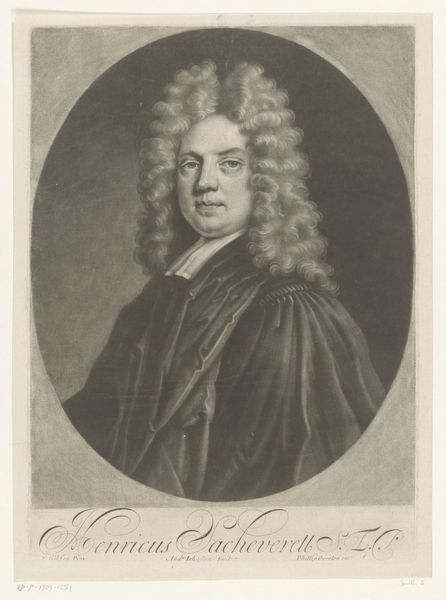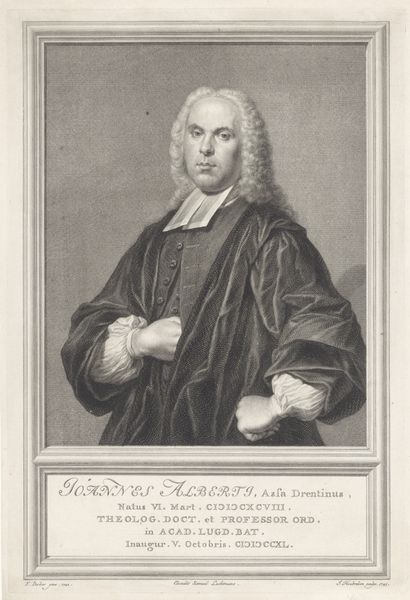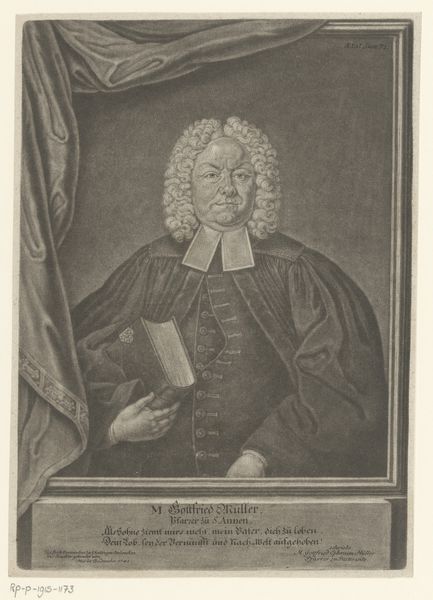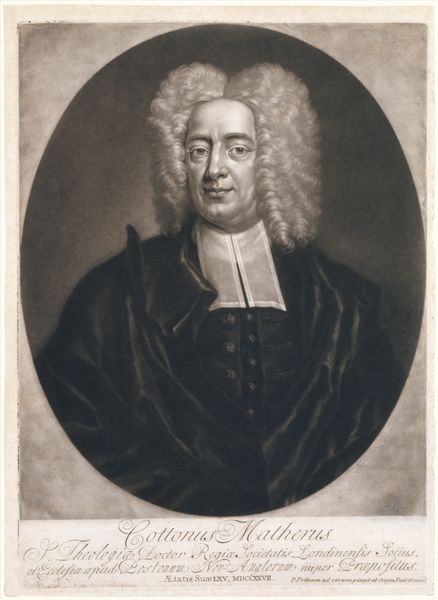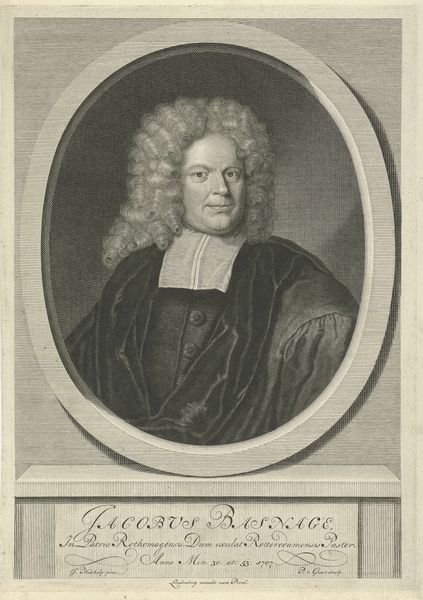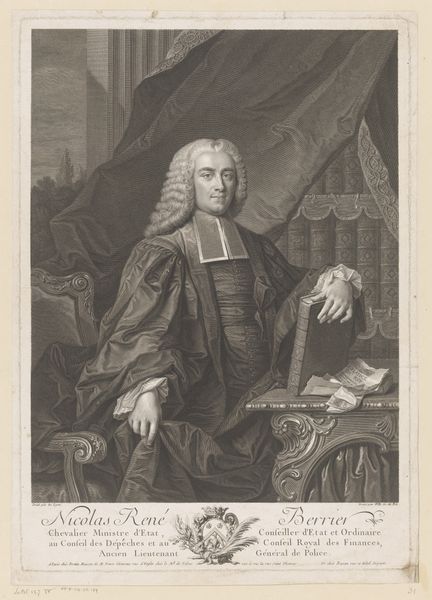
drawing, pen
#
portrait
#
drawing
#
baroque
#
historical photography
#
portrait reference
#
pen
#
portrait drawing
#
history-painting
Dimensions: height 348 mm, width 247 mm
Copyright: Rijks Museum: Open Domain
Editor: So, this is George White’s "Portrait of John Nesbitt," sometime between 1690 and 1732, a pen drawing. It has an undeniable sense of formality, typical of Baroque portraiture I guess, but still I find it surprisingly gentle. What stands out to you in this piece? Curator: Well, beyond the artistic skill evident in capturing Nesbitt's likeness, I immediately think about the social context of portraiture at that time. Consider who had access to having their image rendered. It's not just about capturing an individual; it's about asserting a particular social and political position. Nesbitt's clerical collar is key. What does religious authority mean in this period, and whose stories are actively *not* being told here? Editor: So it's not just a picture of a man, but an emblem of power? I see your point about representation. How do you see this relating to today's power structures? Curator: Absolutely. We have to ask ourselves, even now, who controls the narrative and whose images are privileged? Think about how visual culture reinforces existing social hierarchies and excludes marginalized groups. A portrait like this can open a valuable, if unsettling, window onto questions of inequality. Can you see any challenges in viewing a portrait like this one? Editor: Well, maybe we need to actively challenge these historical narratives. But isn’t that what makes art from the past relevant – that it forces us to confront those inequalities? It encourages discussion. Curator: Exactly! By engaging critically with historical works like this portrait, we can foster a more inclusive and equitable visual landscape. Editor: I’ve never thought of portraiture this way. It's really interesting how much this artwork tells us about its own historical moment, and about today too. Curator: Indeed. Art history isn't just about dates and names. It's about power, representation, and the ongoing struggle for visibility and social justice.
Comments
No comments
Be the first to comment and join the conversation on the ultimate creative platform.

